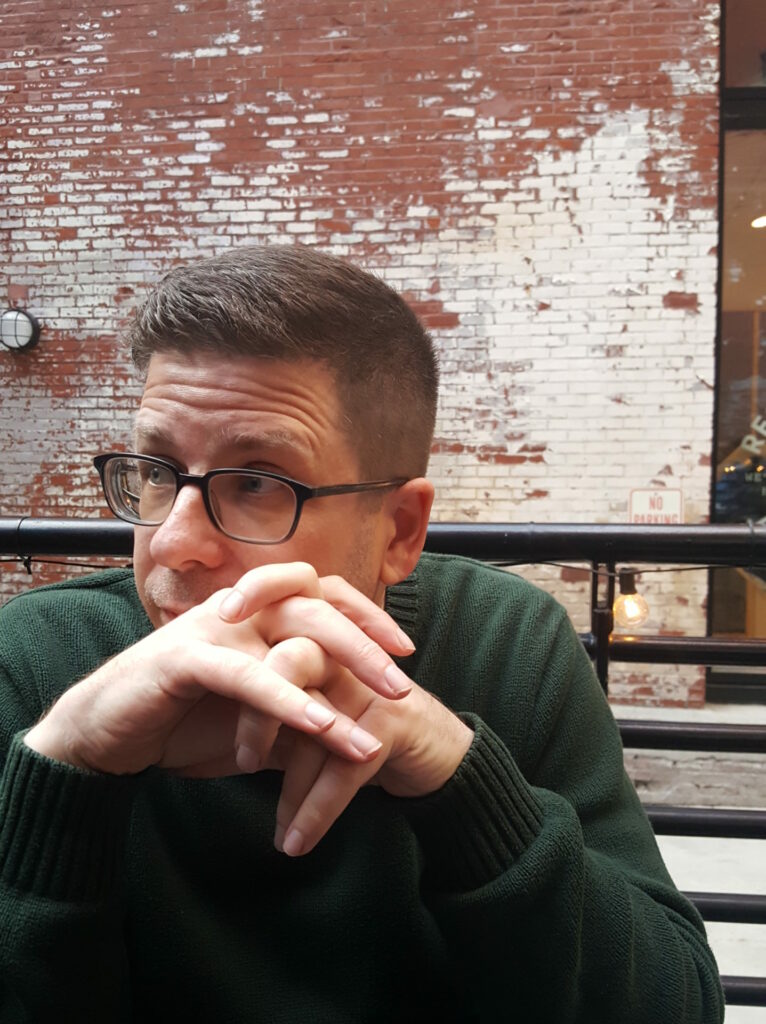
Michael Caulfield, director of blended and networked learning at Washington State University – Vancouver and a nationally recognized digital literacy expert, discusses the roots of our current “digital dissensus” and explains how our approach to education may be making the problem worse.
Twenty three days after a conspiracy-driven coup was attempted on the White House following the presidential election loss for Donald Trump, Mike Caulfiled delivered a talk to faculty and students across the United States on the topic of “Teaching Truth and Trust in an Era of Digital Dissensus.” In an increasingly digitized world, it’s easier than ever to stumble upon misinformation. Snopes, a well-known fact-checking website, has expanded their categories to encompass a new host of “false facts” such as, “fauxtography” and “cokelore” (yes, this is everything CocaCola related).
Caulfield cautions that there’s a deeper dynamic to the obvious spread of misinformation at play—and that arises from an increasing reliance on digital media where information is abundant, attention is scarce, and evaluating credibility is an afterthought.
Students are expected to sift through sources and assess credibility yet there is a growing contingent of “bad actors” who shape misinformation to appear credible and, more importantly, to keep folks locked in an “information loop” which is the way digital media is now monetized: the longer a person stays on a site or the more shares a piece of information gets, the more revenue is generated. This poses a serious problem for students who are coming to terms with research in an age of digital dissensus.
To that end, Caulfield addresses a series of important questions:
- How do we design education for a world where information is plentiful, and attention is the scarcity?
- How do we encourage analysis and engagement in our students without having those same impulses gamed by bad actors?
- What epistemic stances and heuristics serve the public in a world where expertise is niche and very little is directly verifiable, and where facts are atomized, separated from analysis, and reassembled in bizarre and dangerous ways?
Misinformation in the Mundane
Caulfield showed the two images below, and asked how people might respond.


Is either real? Both? One? Neither? What’s the backstory? What steps can you take to find out?
He explained that if you’re like most internet users, you will run through a quick google search to find out what others are saying. You are looking for better coverage.
In just a few seconds, you can find that some reputable online sources—the prominent food magazine Eater.com, for example—support the kentucky fried chicken donut, and very quickly see that the top hits for “caffeinated ham” throw around the term “false” and “fact-check.”
This exercise can show students that it only takes about 5-10 seconds to evaluate the veracity of something like the fried chicken donut sandwich post on Instagram.
But what, he asked, happens when the context is muddier? What if, for example, you’ve found an article on a reputable looking dot-org website instead of the easy-to-suspect Instagram or twitter? What if the original source is harder to trace? What if an article seems to be peer-reviewed?
Introducing the SIFT method
Caulfield acknowledged that there are any number of evaluations a student can perform to analyze the credibility of an article, but not all are useful in everyday or academic life. For example, the CRAAP method is an unfortunately named, widely popular checklist for evaluating sources. It requires students to answer twenty-seven questions for a full evaluation.
Giving a student one minute per question to investigate the source and assess how well it fits the question’s criteria, it would take close to thirty minutes per source to perform an evaluation.
Caulfield noted that checklist approaches demand an unreasonable amount of time and are, in many ways, actively undermining a students’ ability to verify credibility.
When we give a student a source and ask them to evaluate it, “what we have inadvertently trained our students to do,” Caulfield says, “is to see if it makes sense. To see how the logic feels. To see if it’s written in a scholarly style.”
The mistake this approach makes is that students can find overwhelming support of evidence for credibility from the least credible sources. Does the article have footnotes? Does it come from a .org site? Isn’t a dot-org more trustworthy than a dot-com?
What Caulfield’s research has found is that students often go wrong by not asking the two fundamental questions first:
- Who wrote it? (Are they in an authority on this topic?)
- What is the status of the claim? (Did I find this in an appropriate context?)
This, not checklists, is what we need to have students build as a habit.
To facilitate fast, easy student student analysis and engagement, Caulfield developed the SIFT model which asks students to:
- Stop
- Investigate the source
- Find better coverage
- Trace claims, quotes, and media to the original source
“SIFT,” he says, “is something you can do whenever you come to a source that hasn’t come through some already vetted route.”
Caulfield offers a robust breakdown of the different stages of SIFT in a free, online course for teachers who can use the modules to teach their students the SIFT method. You can access that here >>
Evolving Digital Dissensus
It’s becoming increasingly apparent that untrustworthy sources, data, and facts are being presented in areas where we once looked to as paragons of credibility—members of congress believing in conspiracy theories, for example.
Education alone will not solve the problem of disinformation and conspiracy information penetrating media and political elites, Caulfield cautions. “The solution to that would require a restructuring of incentives around telling the truth in politics and media.”
But it is important that we talk to students about the idea of an important person or news outlet and if they are in a position to weigh in with credible authority on a certain topic. This goes back to the two fundamental questions Caulfield encourages students to ask: is the person an authority on this topic? And, did I find this information in an appropriate context?
As students build a habit of recognizing when they’ve encountered a source that should be evaluated, SIFT can happen quite quickly to ensure that the source is credible.
It’s important not to ask students to run a twenty minute check to make a simple evaluation—they’re not going to do it.
Instead, we can encourage students to cultivate the habit both when doing research in an academic setting, as well as when they see claims in something like their social media feed or online.
If students are in the habit of asking themselves questions as they encounter news headlines or social media stories, they will be more equipped to recognize the powers at play asking for their attention, time, and belief.
The questions below can facilitate all the other literacies we’ve taught students to apply:
Is this worth my attention?
Is this worth my time?
Do the people producing this content have my best interests at heart?
Is this going to give me a real view of the current thinking on this topic or could it be deceptive?
SIFT does not replace the media literacy we’ve been teaching students. It serves as a precursor to the harder work that is more time consuming.
SIFT allows students to assess very quickly if a source needs deeper digging, or if they can get rid of it right away and look for something more reliable.
These are basic habits we’re asking students to cultivate that lead into a more comprehensive strategy for evaluation.
“As anyone who’s ever tried to stay on any health regimen knows, habits are some of the hardest things in the world to do,” notes Caulfield. “But even if you do not have 100% compliance with a habit—even if a student remembers to stop only when it’s really outrageous or when they’re really worked up—it can still have an impact at the margins there. I think over time we can get a bunch of students to practice this. Even if we get a small subset, that has a massive impact on spread. So even if five percent of your class walked out with this skill and applied it, we’re going to have a really outsized impact on the spread and belief in fact-checking.”
You can view a recording of Teaching Truth and Trust in an Era of Digital Dissensus here.
